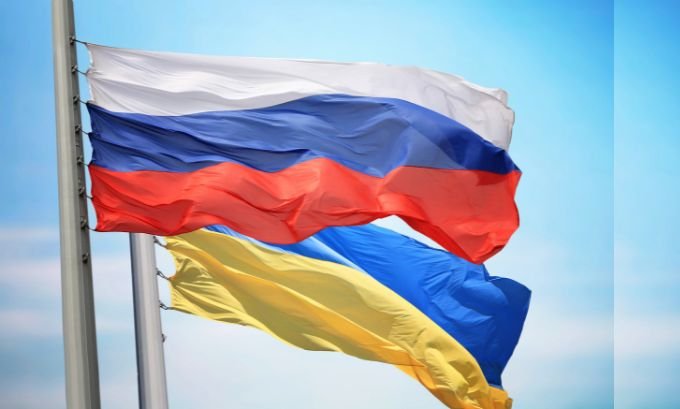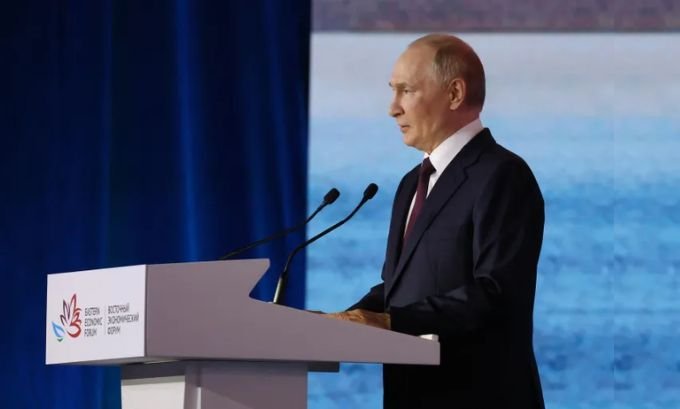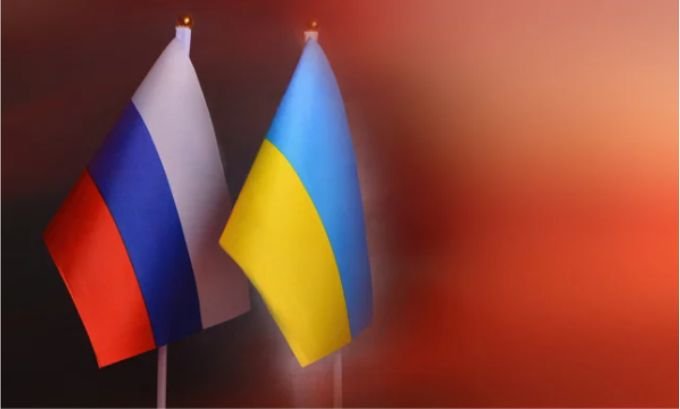On February 24, 2022, Russian forces crossed into Ukraine, launching what would become Europe’s largest military conflict since World War II. While Russia framed this as a “special military operation,” the international community recognized it for what it was: an unprovoked act of war against a sovereign nation.
The invasion sent shockwaves across the globe, triggering the largest refugee crisis in Europe since WWII, reshaping international alliances, and fundamentally altering the geopolitical landscape. But what drove Vladimir Putin to make this fateful decision? Understanding the complex web of historical grievances, security concerns, and geopolitical calculations that led to this moment is crucial for comprehending one of the most significant events of the 21st century.
This analysis examines Russia’s stated justifications, the international response, and the far-reaching consequences of Putin’s decision to invade Ukraine.
Table of Contents
Historical Tensions That Set the Stage
The roots of the 2022 conflict stretch back decades, embedded in the collapse of the Soviet Union and Ukraine’s subsequent path toward independence. When Ukraine declared independence in 1991, it inherited complex relationships with both Russia and the West that would define its future trajectory.
Ukraine’s gradual pivot toward European integration created increasing friction with Moscow. The 2004 Orange Revolution and the 2013-2014 Euromaidan protests demonstrated Ukraine’s desire to align with Western institutions rather than remain in Russia’s sphere of influence. These movements represented a fundamental challenge to Russia’s vision of maintaining control over its former Soviet territories.
The annexation of Crimea in 2014 marked a critical escalation. Russia’s seizure of the peninsula, followed by its support for separatist movements in the Donbas region, established a pattern of using military force to prevent Ukraine’s Western integration. The eight-year conflict in eastern Ukraine that followed created a frozen conflict zone that Russia could manipulate to maintain pressure on Kyiv.

Russia’s Official Justifications for War
NATO Expansion as an Existential Threat
Russia’s primary stated concern centered on NATO’s eastward expansion since the 1990s. Putin consistently argued that Ukraine’s potential NATO membership would place Western military infrastructure directly on Russia’s border, creating an unacceptable security threat.
Russian officials claimed that NATO had broken promises made during German reunification negotiations, though Western leaders dispute these claims. Putin framed Ukraine’s NATO aspirations as part of a broader Western strategy to encircle and weaken Russia, presenting the invasion as a defensive measure against this perceived threat.
Protecting Russian-Speaking Populations
Moscow claimed it was acting to protect Russian-speaking minorities in Ukraine, particularly in the Donetsk and Luhansk regions. This justification drew parallels to the “responsibility to protect” doctrine, though international observers widely rejected Russia’s characterization of these populations as facing systematic persecution.
The Kremlin portrayed Ukrainian government policies, such as language laws promoting Ukrainian over Russian, as discriminatory. However, independent monitoring organizations found no evidence of the large-scale human rights abuses that would typically justify such intervention under international law.
“De-Nazification” and Demilitarization
Perhaps Russia’s most controversial justification was the claim that Ukraine needed “de-Nazification.” Putin alleged that Ukraine’s government was controlled by neo-Nazi elements, despite the fact that Ukraine’s president, Volodymyr Zelenskyy, is Jewish and lost relatives in the Holocaust.
This narrative, while widely rejected by international observers, served domestic propaganda purposes by drawing parallels to Russia’s victory over Nazi Germany in World War II. The “demilitarization” goal aimed to eliminate Ukraine’s ability to resist Russian influence or defend itself against future aggression.

Reclaiming Historical Territory
Putin’s broader ideological framework portrayed Ukraine as an artificial state with no legitimate claim to independent existence. In his view, Ukrainians and Russians constitute one people artificially divided by historical circumstances and Western manipulation.
This imperial worldview, outlined in Putin’s 2021 essay “On the Historical Unity of Russians and Ukrainians,” provided the intellectual foundation for viewing the invasion as a reunification rather than a conquest. Russia sought to restore what it considered its natural sphere of influence over territories once part of the Russian Empire and Soviet Union.
International Response and Global Condemnation
The international community’s response was swift and unprecedented. The United States, European Union, and their allies implemented comprehensive sanctions targeting Russia’s financial system, energy sector, and key individuals. These measures aimed to isolate Russia economically and diplomatically while providing military and financial support to Ukraine.
NATO unity strengthened dramatically in response to the invasion, with members increasing defense spending and accelerating military aid to Ukraine. The conflict prompted Finland and Sweden to abandon their traditional neutrality and seek NATO membership, achieving the opposite of Russia’s stated goal of preventing NATO expansion.
The United Nations General Assembly overwhelmingly condemned the invasion, with 141 countries voting to demand Russia’s withdrawal. Even traditionally neutral countries imposed sanctions, demonstrating the global rejection of Russia’s actions as violations of international law and the UN Charter.
The High Cost of Putin’s Gamble
Humanitarian Catastrophe
The invasion created Europe’s largest refugee crisis since World War II, with over 6 million Ukrainians fleeing their country and millions more internally displaced. Civilian casualties mounted as Russian forces targeted critical infrastructure, hospitals, and schools, leading to war crimes investigations by international tribunals.
Economic Consequences
Russia’s economy faced severe disruption from international sanctions, including exclusion from the SWIFT banking system and restrictions on energy exports. The ruble’s value plummeted initially, though government intervention stabilized it temporarily. Long-term isolation from Western technology and finance markets promises to undermine Russia’s economic development for years.
Global markets experienced significant disruption, with energy and food prices spiking due to supply chain interruptions. Both Russia and Ukraine are major grain exporters, and the conflict threatened food security in vulnerable regions worldwide.
Military and Strategic Setbacks
Contrary to expectations of a swift victory, Russian forces encountered fierce Ukrainian resistance and logistical challenges. Military analysts noted poor planning, equipment failures, and low morale among Russian troops. The conflict exposed significant weaknesses in Russia’s military modernization efforts.
Why Russia’s Justifications Failed to Convince
The international community largely rejected Russia’s stated reasons as pretexts for territorial expansion and imperial restoration. NATO had not admitted Ukraine as a member, and no concrete timeline existed for membership. Ukraine posed no military threat to Russia and had repeatedly sought diplomatic solutions to regional tensions.
The “protection of Russian speakers” justification collapsed under scrutiny, as these populations had not requested Russian intervention and many actively resisted the invasion. The de-Nazification claim appeared particularly hollow given Ukraine’s democratically elected government and Jewish president.
Most fundamentally, Russia’s actions violated the core principle of state sovereignty enshrined in international law. Regardless of Moscow’s security concerns or historical claims, the unprovoked invasion of a sovereign nation represented a clear violation of the UN Charter and established norms of international conduct.

Understanding the Broader Implications
Russia’s invasion of Ukraine in 2022 represented more than a regional conflict—it marked a fundamental challenge to the post-World War II international order. Putin’s decision reflected a broader Russian strategy to restore great power status and challenge Western dominance in global affairs.
The war’s outcome will likely determine the future of European security architecture and the effectiveness of international law in preventing territorial aggression. Ukraine’s resistance has demonstrated that military conquest alone cannot guarantee political control, while the international response has shown renewed Western unity in defending democratic values.
The conflict continues to evolve, but its origins lie in Russia’s rejection of Ukraine’s sovereign right to choose its own path. Understanding these motivations helps explain not just why the war began, but why achieving lasting peace will require addressing fundamental questions about sovereignty, security, and the future of European order.
FAQ: Russia–Ukraine War 2022
Q1. Why did Russia invade Ukraine in 2022?
Russia claimed NATO expansion, protection of Russian speakers, and “de-Nazification” as justifications, though most analysts view these as pretexts for territorial expansion.
Q2. Is NATO responsible for the war?
NATO had not admitted Ukraine as a member, and most experts consider Russia’s NATO concerns exaggerated. The alliance’s defensive nature contradicts claims of it being an offensive threat.
Q3. Did Ukraine provoke Russia?
Ukraine denies provocation, and the international community widely considers the invasion unprovoked. Ukraine had pursued diplomatic solutions to regional tensions.
Q4. What does “special military operation” mean?
This is Russia’s euphemistic term for the invasion, used domestically to avoid calling it a war and the legal implications that would entail.
Q5. Has Russia achieved its goals?
Russia has failed to achieve its stated objectives of quick regime change, demilitarization, or preventing NATO expansion, while facing heavy casualties and international isolation.
Q6. How has the war affected the world?
The conflict has caused energy price spikes, food shortages, refugee crises, and fundamental shifts in international alliances and security arrangements.
Q7. Can diplomacy still solve the conflict?
While peace negotiations have repeatedly failed, future diplomatic solutions may become possible depending on battlefield developments and changes in political leadership.

